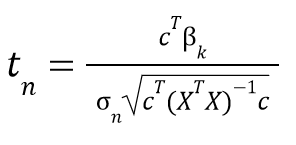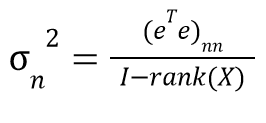Sift - Statistical Parametric Mapping
| Language: | English • français • italiano • português • español |
|---|
Statistical Parametric Mapping (SPM) is a method to create "Maps" of arbitrary statistical tests, which can be applied across the entirety of a continuous curve. These maps exist in the same n-dimensional space as their underlying data, which allows for the results to be more interpretable, as well as removing bias relating to selecting summary statistics like maximums, minimums or averages. Using random-field-theory, the inherent dependence between the parameters on these maps can be accounted for when determining how statistically relevant the results of a map are.
The Utility of SPM
Statistical tests, such as a T-Test, are useful tools used by scientists and statisticians, but they can fall prey to biases when trying to apply them to continuous data. At which point should these be applied? The maximum? 50% through the gait cycle? All biomechanics signals have variance to them, and while registering these signals can help align them for better analysis, all the information outside of these specially chosen points will be lost, when it could be useful to our analysis.
The Math behind SPM
The basis of SPM begins with modeling our data with a General Linear Model (GLM). A GLM is simply relating our data Y to an experimental design matrix X. This experimental design matrix represents the experiment, and may represent what group or condition a trial belongs to (i.e. a 1 in the column that the trial belongs to, and 0 otherwise). We relate these though the formula:
Y = XB + e
Where B is a regression matrix (to be estimated using a Moore-Penrose inverse) and e is the resulting residuals.
This GLM allows us to apply arbitrary linear tests to each data point (i.e. a point in time for a gait analysis), such as a t-test, creating a "Statistical Parametric Map", existing in the same n-dimensional space as the original data points (ex. 101 time data points for a normalized gait cycle). For a t-test, the nth term in the SPM is:
where c is a contrast vector indicating how we are selecting from our regression matrix (B), ^T represents a transposed matrix, rho is the square-root of our variance, and X is our design matrix. The calculation for rho is shown below:
where e is the residuals, nn represents the nth diagonal element of the matrix, I represents the number of trials we have instituted, and rank(X) is equal to the number of groups (for a t-test, this would be 2).
With n samples in our map, it would be sound to estimate the significance with a Bonferroni correction, but we know that spatially similar data points in biomechanics are intrinsically dependent on each other, and thus the Bonferroni assumption of independence between data points would result in a far more conservative than necessary significance. As such, Random Field Theory (rft) is employed to estimate the dependence between data points (called smoothness), and to establish a threshold for statistical significance of the data. This can be represented with the familiar p-values for simple t-tests.
Visualizing SPM Results
Visualizing your SPM results is important, and is broken down in the SPM Analyse Page.
This page includes:
- Visualizing the maps;
- Visualizing the statistics;
Tutorials
For a step-by-step example of how to use Sift to perform SPM on your data, and to interpret the results, see the SPM Tutorial.
Reference
Our implementation of Statistical Parametric Mapping is based on the article:
- Pataky TC (2010) Generalized n-dimensional biomechanical field analysis using statistical parametric mapping. Journal of Biomechanics 43. 1976-82 ([1])
- Abstract
- A variety of biomechanical data are sampled from smooth n-dimensional spatiotemporal fields. These data are usually analyzed discretely, by extracting summary metrics from particular points or regions in the continuum. It has been shown that, in certain situations, such schemes can compromise the spatiotemporal integrity of the original fields. An alternative methodology called statistical parametric mapping (SPM), designed specifically for continuous field analysis, constructs statistical images that lie in the original, biomechanically meaningful sampling space. The current paper demonstrates how SPM can be used to analyze both experimental and simulated biomechanical field data of arbitrary spatiotemporal dimensionality. Firstly, 0-, 1-, 2-, and 3-dimensional spatiotemporal datasets derived from a pedobarographic experiment were analyzed using a common linear model to emphasize that SPM procedures are (practically) identical irrespective of the data's physical dimensionality. Secondly two probabilistic finite element simulation studies were conducted, examining heel pad stress and femoral strain fields, respectively, to demonstrate how SPM can be used to probe the significance of field-wide simulation results in the presence of uncontrollable or induced modeling uncertainty. Results were biomechanically intuitive and suggest that SPM may be suitable for a wide variety of mechanical field applications. SPM's main theoretical advantage is that it avoids problems associated with a priori assumptions regarding the spatiotemporal foci of field signals. SPM's main practical advantage is that a unified framework, encapsulated by a single linear equation, affords comprehensive statistical analyses of smooth scalar fields in arbitrarily bounded n-dimensional spaces.

